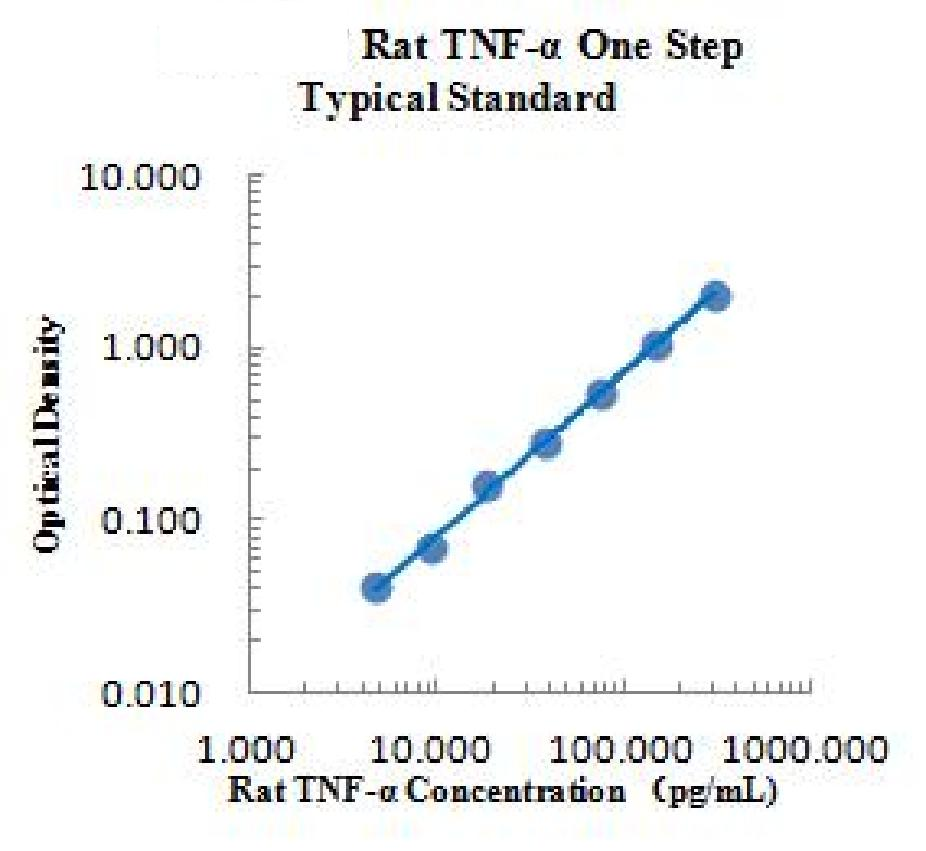
Details
| SAMPLE TYPE | Serum, plasma, DMEM cell culture supernatant |
|---|---|
| SAMPLE VOLUME | Serum or plasma: 20μL; DMEM cell culture supernatant: 100μL |
| SENSITIVITY | 0.43 pg/mL |
| RANGE | 4.69 pg/mL - 300 pg/mL |
| ASSAY TIME | 1.5 h |
| RECOVERY | 77 % - 122 % |
| AVERAGE RECOVERY | 0.95 |
| PLATFORM | ELISA |
| PLATE | Detachable 96-well plate |
| SIZE | 96T/48T |
| STORAGE | If the reagent kit is unopened, it should be stored at 4℃. However, if it has been opened, the standard solution should be stored at -20℃, while the other components should be stored at 4℃. |
| DELIVERY | 4℃ blue ice transportation |
| COMPONENTS | 96-well polystyrene enzyme-linked immunosorbent assay (ELISA) plate coated with anti-TNF-α monoclonal antibody Rat TNF-α freeze-dried standard TNF-α detect Antibody Standard Diluent Assay Buffer(10×) Substrate TMB Stop Solution Washing Buffer(20×) Sealing Film |
| ASSAY PRINCIPLE | This assay employs the quantitative sandwich enzyme immunoassay technique. Amonoclonal antibody specific for Rat TNF-α has been immobilized onto microwells, and one pellet of the HRP-linked detect antibody specific for TNF-α (light yellow) is pre-placed in the microwells, sealed by the adhesive film. Standard or samples are pipetted into the wells, then TNF-α present is bound by the immobilized antibody and detect antibody. After washing, substrate solution reacts with HRP and color develops in proportion to the amount of TNF-α bound by the immobilizedantibody. The color development is stopped and the intensity of the color is measured bymicroplate reader. |


Partial purchase records (8)
| Username | Quantity | bought time |
| Fi*** | 3 | 2024-07-29 |
| Di*** | 1 | 2024-06-22 |
| Sa*** | 2 | 2024-06-19 |
| Vi*** | 2 | 2024-06-14 |
| Sa*** | 1 | 2024-05-31 |
Leave a message
 +86 0571 56623320
+86 0571 56623320 [email protected]
[email protected]

Scan Wechat Qrcode


Scan Whatsapp Qrcode
